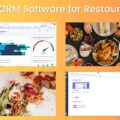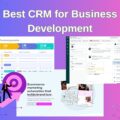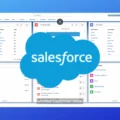10 Best Inventory System Software
Accurately tracking inventory is a major challenge for businesses across various sectors, from retail and manufacturing to healthcare and logistics. Inefficient inventory management can lead to stockouts, overstocking, increased carrying costs, and ultimately, lost revenue. This is where robust inventory system software becomes essential, providing real-time visibility and control over stock levels, order fulfillment, and supply chain operations.
This article provides a detailed overview of ten of the best inventory system software solutions available in 2025. We’ll examine their key features, pricing, and ideal use cases, equipping you with the knowledge to select the optimal system for your business needs. This comparison will help you understand the nuances of each platform and make an informed decision.
Why is Inventory System Software Needed?
Many businesses struggle with outdated or manual inventory tracking methods, leading to inaccuracies and inefficiencies. Relying on spreadsheets or paper-based systems can result in significant problems.
- Inaccurate Stock Counts: Manual inventory counts are prone to human error, leading to discrepancies between recorded and actual stock levels. This can result in stockouts or overstocking.
- Inefficient Order Fulfillment: Without real-time inventory data, fulfilling orders becomes a time-consuming process, leading to delays and customer dissatisfaction.
- Increased Carrying Costs: Overstocking ties up capital and increases storage costs, while understocking can lead to lost sales opportunities.
- Poor Supply Chain Visibility: Lack of visibility into inventory levels across the supply chain hinders effective planning and coordination.
- Missed Sales Opportunities: Inability to track product demand accurately can result in missed sales opportunities and lost revenue.
Inventory system software provides a centralized platform for managing stock levels, tracking orders, and optimizing supply chain operations. These systems automate many of the tasks associated with inventory management, improving accuracy, efficiency, and profitability.
Key Features to Look For
Selecting the right inventory system software requires careful consideration of the features that are most important to your business.
Real-Time Inventory Tracking:
A system that provides up-to-the-minute visibility into stock levels across all locations is essential. This feature allows businesses to make informed decisions about purchasing and order fulfillment, minimizing the risk of stockouts or overstocking.
Order Management:
The ability to manage orders from multiple channels, including online stores, marketplaces, and physical locations, is crucial. This feature streamlines the order fulfillment process, reducing errors and improving customer satisfaction.
Reporting and Analytics:
Robust reporting and analytics capabilities provide valuable insights into inventory performance, allowing businesses to identify trends, optimize stock levels, and improve profitability. This includes reports on sales, stock turnover, and product performance.
Integration with Other Systems:
The ability to integrate with other business systems, such as accounting software, e-commerce platforms, and CRM systems, is important for streamlining workflows and eliminating data silos. This ensures that all departments have access to the same accurate information.
Mobile Inventory Management:
Mobile capabilities allow users to manage inventory from anywhere, using smartphones or tablets. This improves efficiency and allows for real-time updates from the warehouse or store floor.
Benefits
Implementing inventory system software offers a range of benefits that can significantly improve a business’s bottom line.
Improved Inventory Accuracy:
Automated tracking and real-time updates minimize human error, leading to more accurate stock counts and reduced discrepancies. This allows businesses to make data-driven decisions about purchasing and order fulfillment.
Increased Efficiency:
Automating inventory management tasks, such as order processing and stocktaking, frees up staff time and reduces the risk of errors. This allows employees to focus on more strategic activities.
Reduced Costs:
Optimizing stock levels and minimizing waste reduces carrying costs and prevents lost sales due to stockouts. This improves profitability and cash flow.
Enhanced Customer Satisfaction:
Faster order fulfillment and accurate inventory information improve the customer experience and build loyalty. This can lead to increased sales and positive word-of-mouth referrals.
Better Decision-Making:
Real-time data and comprehensive reporting provide valuable insights into inventory performance, enabling businesses to make informed decisions about purchasing, pricing, and marketing.
What Are the Top Inventory Management Solutions?
Fishbowl Inventory – Best for Manufacturing and Warehousing
Fishbowl Inventory is a robust inventory management solution designed for small to medium-sized businesses, particularly those in the manufacturing and warehousing industries. It offers comprehensive features for managing inventory, manufacturing processes, and warehouse operations, providing a centralized platform for streamlining business operations.
Fishbowl Inventory includes advanced features such as bill of materials management, work order processing, and manufacturing resource planning (MRP). These capabilities enable manufacturers to efficiently manage production schedules, track material costs, and optimize resource allocation. The software also supports barcode scanning, cycle counting, and other inventory control methods.
The software integrates with popular accounting software such as QuickBooks, allowing for seamless data exchange and improved financial reporting. Additional features include sales order management, shipping integration, and customer relationship management (CRM) capabilities. Fishbowl Inventory’s user interface can be customized to meet specific business needs.
Fishbowl Inventory stands out from solutions like Zoho Inventory with its robust manufacturing capabilities. While Zoho Inventory is suitable for retail and e-commerce businesses, Fishbowl Inventory provides more advanced features for managing complex manufacturing processes. Unlike NetSuite, which is geared towards larger enterprises, Fishbowl Inventory is designed for small to medium-sized businesses.
Key Features:
- Bill of Materials Management: Streamlines the manufacturing process by managing components and assemblies.
- Work Order Processing: Tracks work orders from creation to completion, ensuring efficient production.
- Manufacturing Resource Planning (MRP): Optimizes resource allocation and production schedules.
- Barcode Scanning: Improves inventory accuracy and speeds up data entry.
- QuickBooks Integration: Enables seamless data exchange with accounting software.
Pricing:
Starting at $4,395 (one-time purchase)
No free plan
Custom pricing available for enterprise solutions
Best For: Manufacturing and warehousing businesses that require robust inventory management and manufacturing capabilities.
Zoho Inventory – Best for E-Commerce Businesses
Zoho Inventory is a cloud-based inventory management system designed for small to medium-sized e-commerce businesses. It offers a comprehensive suite of features for managing inventory, orders, and shipping, helping businesses streamline their operations and improve efficiency.
Zoho Inventory provides real-time inventory tracking across multiple warehouses and sales channels. It also includes features for managing sales orders, purchase orders, and shipping, allowing businesses to automate their order fulfillment process. The software integrates with popular e-commerce platforms such as Shopify and Amazon, as well as accounting software such as Zoho Books and QuickBooks.
Additional features include barcode scanning, serial number tracking, and inventory reporting. Zoho Inventory’s user-friendly interface and mobile app make it easy to manage inventory on the go. The platform also offers customizable templates for invoices, packing slips, and other documents.
Zoho Inventory is a more affordable solution compared to TradeGecko, while still offering a robust set of features for e-commerce businesses. Unlike Unleashed, which focuses on manufacturing inventory, Zoho Inventory is designed for retail and e-commerce inventory management.
Key Features:
- Multi-Channel Inventory Management: Tracks inventory across multiple sales channels, including online stores and marketplaces.
- Order Management: Streamlines the order fulfillment process from order placement to shipping.
- Shipping Integration: Integrates with popular shipping carriers to automate shipping tasks.
- Barcode Scanning: Improves inventory accuracy and speeds up data entry.
- Zoho Books Integration: Enables seamless data exchange with accounting software.
Pricing:
Starting at $49/month
Free plan: Available for small businesses with limited features
Premium: $249/month
Enterprise: $399/month
Best For: Small to medium-sized e-commerce businesses that need a comprehensive and affordable inventory management solution.
inFlow Inventory – Best for Small Businesses with Physical Locations
inFlow Inventory is an inventory management software designed for small businesses with physical locations, such as retail stores and warehouses. It offers a range of features for managing inventory, orders, and manufacturing, helping businesses streamline their operations and improve efficiency.
inFlow Inventory provides real-time inventory tracking across multiple locations. It also includes features for managing sales orders, purchase orders, and manufacturing processes. The software supports barcode scanning, serial number tracking, and batch tracking, allowing businesses to maintain accurate inventory records.
Additional features include reporting and analytics, which provide valuable insights into inventory performance. inFlow Inventory also integrates with popular accounting software such as QuickBooks and Xero, as well as e-commerce platforms such as Shopify. Its user-friendly interface and mobile app make it easy to manage inventory from anywhere.
inFlow Inventory is a more affordable option compared to Acctivate, while still offering a comprehensive set of features for small businesses. Unlike Katana MRP, which is primarily focused on manufacturing, inFlow Inventory is suitable for businesses with both retail and manufacturing operations.
Key Features:
- Multi-Location Inventory Management: Tracks inventory across multiple physical locations.
- Order Management: Streamlines the order fulfillment process from order placement to shipping.
- Manufacturing Management: Manages manufacturing processes, including bill of materials and work orders.
- Barcode Scanning: Improves inventory accuracy and speeds up data entry.
- QuickBooks and Xero Integration: Enables seamless data exchange with accounting software.
Pricing:
Starting at $199/month
No free plan
Custom pricing available for enterprise solutions
Best For: Small businesses with physical locations that need a comprehensive and affordable inventory management solution.
Cin7 – Best for Omnichannel Retail
Cin7 is a cloud-based inventory management platform designed for omnichannel retail businesses. It provides a centralized platform for managing inventory, orders, and fulfillment across multiple sales channels, including online stores, marketplaces, and physical locations.
Cin7 offers real-time inventory visibility, automated order processing, and integrated shipping capabilities. It also includes features for managing product catalogs, pricing, and promotions. The software integrates with popular e-commerce platforms such as Shopify, Magento, and Amazon, as well as accounting software such as Xero and QuickBooks.
Additional features include barcode scanning, serial number tracking, and landed cost tracking. Cin7’s advanced reporting and analytics provide valuable insights into inventory performance and sales trends. The platform also offers customizable workflows and automation rules to streamline business processes.
Cin7 offers a more comprehensive solution compared to Vend POS, particularly for businesses with complex omnichannel operations. Unlike Dear Inventory, which focuses on manufacturing inventory, Cin7 is designed for retail and e-commerce inventory management.
Key Features:
- Omnichannel Inventory Management: Tracks inventory across multiple sales channels, including online stores, marketplaces, and physical locations.
- Automated Order Processing: Automates order fulfillment tasks, such as order routing and shipping.
- Integrated Shipping: Integrates with popular shipping carriers to automate shipping tasks.
- Barcode Scanning: Improves inventory accuracy and speeds up data entry.
- Xero and QuickBooks Integration: Enables seamless data exchange with accounting software.
Pricing:
Starting at $299/month
No free plan
Custom pricing available for enterprise solutions
Best For: Omnichannel retail businesses that need a comprehensive inventory management solution to manage their multi-channel sales operations.
Unleashed – Best for Advanced Manufacturing Inventory
Unleashed is a cloud-based inventory management software designed for manufacturing and distribution businesses. It provides a comprehensive suite of features for managing inventory, production, and sales, helping businesses streamline their operations and improve efficiency.
Unleashed offers real-time inventory tracking, bill of materials management, and production planning capabilities. It also includes features for managing sales orders, purchase orders, and shipping. The software integrates with popular accounting software such as Xero and QuickBooks, as well as e-commerce platforms such as Shopify and Magento.
Additional features include barcode scanning, serial number tracking, and batch tracking. Unleashed’s advanced reporting and analytics provide valuable insights into inventory performance and production efficiency. The platform also offers customizable dashboards and workflows.
Unleashed is a more powerful solution compared to Inventory Source, particularly for businesses with complex manufacturing processes. Unlike TradeGecko, which is geared towards retail and e-commerce businesses, Unleashed is designed for manufacturing and distribution inventory management.
Key Features:
- Real-Time Inventory Tracking: Provides up-to-the-minute visibility into stock levels across all locations.
- Bill of Materials Management: Streamlines the manufacturing process by managing components and assemblies.
- Production Planning: Optimizes production schedules and resource allocation.
- Barcode Scanning: Improves inventory accuracy and speeds up data entry.
- Xero and QuickBooks Integration: Enables seamless data exchange with accounting software.
Pricing:
Starting at $299/month
No free plan
Custom pricing available for enterprise solutions
Best For: Manufacturing and distribution businesses that need a comprehensive inventory management solution to manage their production and sales operations.
Katana MRP – Best for Small Manufacturers
Katana MRP is a manufacturing ERP (Enterprise Resource Planning) system designed for small to medium-sized manufacturers. It focuses on providing visual and intuitive tools for managing inventory, production scheduling, and shop floor control.
Katana MRP offers features such as real-time inventory tracking, bill of materials management, production scheduling, and shop floor control. It integrates with e-commerce platforms like Shopify and accounting software like Xero and QuickBooks. This integration allows for seamless data flow between different business functions.
The software’s visual interface and drag-and-drop functionality make it easy for users to manage production schedules and track work orders. Katana MRP also includes features for managing purchasing, sales, and customer relationships.
Compared to Fishbowl Inventory, Katana MRP offers a more streamlined and user-friendly interface, making it easier for smaller manufacturers to adopt. While NetSuite offers a broader range of features, Katana MRP is specifically tailored to the needs of small to medium-sized manufacturers.
Key Features:
- Real-time Inventory Tracking: Provides accurate inventory levels to prevent stockouts and overstocking.
- Bill of Materials Management: Simplifies the management of components and assemblies.
- Production Scheduling: Optimizes production schedules for efficient resource utilization.
- Shop Floor Control: Tracks work orders and monitors production progress.
- Xero and QuickBooks Integration: Enables seamless data exchange with accounting software.
Pricing:
Starting at $99/month
Free trial available
Custom pricing available for enterprise solutions
Best For: Small to medium-sized manufacturers looking for an intuitive and visual manufacturing ERP system.
Odoo Inventory – Best for Customizable Inventory Management
Odoo Inventory is a module within the Odoo suite of business applications. It offers a flexible and customizable inventory management solution that can be tailored to meet the specific needs of various industries.
Odoo Inventory provides features such as real-time inventory tracking, automated inventory valuation, and multi-warehouse management. It also includes features for managing purchase orders, sales orders, and shipping. The module integrates seamlessly with other Odoo applications, such as accounting, manufacturing, and e-commerce.
Odoo’s open-source nature allows for extensive customization and the development of custom modules. This makes it possible to adapt the system to unique business requirements. Odoo also offers a wide range of community-developed apps that can extend the functionality of the inventory module.
Compared to Zoho Inventory, Odoo Inventory offers greater flexibility and customization options. While Cin7 is designed for omnichannel retail, Odoo Inventory can be adapted to various industries, including manufacturing, retail, and distribution.
Key Features:
- Real-time Inventory Tracking: Provides accurate inventory levels across multiple locations.
- Automated Inventory Valuation: Automates the calculation of inventory costs.
- Multi-Warehouse Management: Manages inventory across multiple warehouses.
- Purchase Order Management: Streamlines the purchasing process.
- Sales Order Management: Automates the sales order fulfillment process.
Pricing:
Starting at $24.90/user/month (billed annually)
Free plan available with limited features
Custom pricing available for enterprise solutions
Best For: Businesses that need a highly customizable inventory management solution that can be tailored to their specific needs.
Acctivate – Best for Distribution Businesses
Acctivate is a business management software designed for distribution businesses. It offers features for managing inventory, sales, purchasing, and customer service. Acctivate integrates with QuickBooks, providing a comprehensive solution for managing all aspects of a distribution business.
Acctivate provides real-time inventory tracking, barcoding, and warehouse management capabilities. It also includes features for managing sales orders, purchase orders, and returns. The software’s CRM (Customer Relationship Management) module helps businesses manage customer interactions and improve customer service.
Acctivate’s integration with QuickBooks allows for seamless data exchange between accounting and operations. The software also offers a mobile app for managing inventory and sales on the go.
Compared to inFlow Inventory, Acctivate offers more advanced features for distribution businesses. While Unleashed focuses on manufacturing inventory, Acctivate is designed for managing the complexities of distribution operations.
Key Features:
- Real-time Inventory Tracking: Provides accurate inventory levels across multiple locations.
- Barcoding: Improves inventory accuracy and speeds up data entry.
- Warehouse Management: Optimizes warehouse operations and space utilization.
- Sales Order Management: Streamlines the sales order fulfillment process.
- QuickBooks Integration: Enables seamless data exchange with accounting software.
Pricing:
Starting at $1,500/year (per user)
No free plan
Custom pricing available for enterprise solutions
Best For: Distribution businesses that need a comprehensive business management solution with strong inventory and sales capabilities.
NetSuite Inventory Management – Best for Large Enterprises
NetSuite Inventory Management is a module within the NetSuite ERP (Enterprise Resource Planning) system. It offers a comprehensive inventory management solution for large enterprises, providing features such as real-time inventory tracking, demand planning, and supply chain management.
NetSuite Inventory Management provides features such as real-time inventory tracking, demand planning, and supply chain management. It also includes features for managing warehouse operations, order fulfillment, and shipping. The module integrates seamlessly with other NetSuite modules, such as accounting, CRM, and e-commerce.
NetSuite’s cloud-based platform provides scalability and accessibility, allowing businesses to manage their inventory from anywhere. The system also offers advanced analytics and reporting capabilities, providing insights into inventory performance and trends.
Compared to Fishbowl Inventory, NetSuite Inventory Management offers a broader range of features and is designed for larger enterprises. While Odoo Inventory offers customization options, NetSuite Inventory Management provides a more comprehensive and integrated solution.
Key Features:
- Real-time Inventory Tracking: Provides accurate inventory levels across multiple locations.
- Demand Planning: Forecasts future demand to optimize inventory levels.
- Supply Chain Management: Manages the flow of goods from suppliers to customers.
- Warehouse Management: Optimizes warehouse operations and space utilization.
- Order Fulfillment: Streamlines the order fulfillment process.
Pricing:
Custom pricing (typically starts at $25,000/year)
No free plan
Best For: Large enterprises that need a comprehensive inventory management solution integrated with other business functions.
Square for Retail – Best for Small Retail Businesses
Square for Retail is a point-of-sale (POS) system with integrated inventory management features designed for small retail businesses. It provides a simple and intuitive solution for managing sales, inventory, and customer relationships.
Square for Retail offers features such as real-time inventory tracking, barcode scanning, and low-stock alerts. It also includes features for managing sales, payments, and customer profiles. The system integrates with Square’s other services, such as Square Online and Square Marketing.
Square’s user-friendly interface and mobile app make it easy for businesses to manage their inventory and sales from anywhere. The system also offers reporting and analytics capabilities, providing insights into sales trends and inventory performance.
Compared to Zoho Inventory, Square for Retail is more focused on point-of-sale functionality, with inventory management as an integrated feature. While Cin7 is designed for omnichannel retail, Square for Retail is best suited for small retail businesses with a single location or a small number of locations.
Key Features:
- Real-time Inventory Tracking: Provides accurate inventory levels.
- Barcode Scanning: Improves inventory accuracy and speeds up data entry.
- Low-Stock Alerts: Notifies users when inventory levels are low.
- Sales Management: Manages sales transactions and customer payments.
- Customer Relationship Management (CRM): Manages customer profiles and interactions.
Pricing:
Starting at $0/month (for basic POS features)
Square for Retail Plus: $69/month (per location)
Custom pricing available for enterprise solutions
Best For: Small retail businesses that need a simple and affordable point-of-sale system with integrated inventory management features.
Inventory System Software Comparison
Here’s a side-by-side comparison of the top solutions.
| Software | Best For | Starting Price | Key Features | Integrations | Free Plan |
|---|---|---|---|---|---|
| Fishbowl Inventory | Manufacturing & Warehousing | $4,395 (one-time) | BOM, MRP, Work Orders | QuickBooks | No |
| Zoho Inventory | E-Commerce | $49/month | Multi-channel, Order Mgmt | Shopify, Amazon, Zoho Books | Yes (Limited) |
| inFlow Inventory | Small Businesses w/ Physical Locations | $199/month | Multi-location, Manufacturing | QuickBooks, Xero, Shopify | No |
| Cin7 | Omnichannel Retail | $299/month | Omnichannel, Order Automation | Shopify, Magento, Amazon | No |
| Unleashed | Advanced Manufacturing Inventory | $299/month | BOM, Production Planning | Xero, QuickBooks, Shopify | No |
| Katana MRP | Small Manufacturers | $99/month | Visual Scheduling, Shop Floor Control | Shopify, Xero, QuickBooks | No |
| Odoo Inventory | Customizable Inventory Management | $24.90/user/month | Customizable, Multi-Warehouse | Odoo Apps | Yes (Limited) |
| Acctivate | Distribution Businesses | $1,500/year (per user) | Distribution-Specific, CRM | QuickBooks | No |
| NetSuite Inventory Management | Large Enterprises | Custom Pricing | Demand Planning, Supply Chain | NetSuite Modules | No |
| Square for Retail | Small Retail Businesses | $0/month (basic) | POS Integration, CRM | Square Services | Yes (Basic) |
How to Choose the Right Inventory Software
Selecting the appropriate inventory system software requires a thorough evaluation of your business requirements and a careful comparison of available solutions.
Assess Your Specific Needs
Begin by identifying your specific inventory management challenges and requirements. Consider the size of your business, the complexity of your inventory, and the number of sales channels you use.
Evaluate Integration Requirements
Determine which other business systems your inventory software needs to integrate with, such as accounting software, e-commerce platforms, and CRM systems. Ensure that the software you choose offers seamless integration with these systems.
Consider User Experience
Choose software with a user-friendly interface that is easy for your employees to learn and use. A well-designed user interface can improve efficiency and reduce errors.
Check Scalability Options
Ensure that the software you choose can scale with your business as it grows. Consider the number of users, the volume of transactions, and the storage capacity of the system.
Review Pricing Models
Compare the pricing models of different software vendors. Consider factors such as subscription fees, implementation costs, and support charges.
Test with Free Trials
Take advantage of free trials or demos to test the software before making a purchase. This will allow you to evaluate the software’s features and usability.
Read Reviews & Case Studies
Read reviews and case studies from other businesses that have used the software. This can provide valuable insights into the software’s strengths and weaknesses.
Inventory Software Best Practices
Implementing inventory system software is only the first step. To maximize its benefits, follow these best practices.
Start with Clear Requirements
Define your inventory management goals and objectives before implementing the software. This will help you configure the system to meet your specific needs.
Involve Key Stakeholders Early
Involve key stakeholders from different departments in the implementation process. This will ensure that the software meets the needs of all users.
Plan for Proper Training
Provide adequate training to all users on how to use the software. This will help them adopt the system quickly and efficiently.
Monitor Adoption Metrics
Track key metrics such as inventory accuracy, order fulfillment time, and stockout rates. This will help you identify areas for improvement.
Leverage Automation Features
Take advantage of automation features to streamline inventory management tasks. This can save time and reduce errors.
Maintain Data Quality
Ensure that your inventory data is accurate and up-to-date. This will help you make informed decisions about purchasing and order fulfillment.
Schedule Regular Reviews
Schedule regular reviews of your inventory management processes. This will help you identify areas for improvement and optimize your use of the software.
Streamlining Your Inventory Strategy
Choosing the right inventory system software is a critical decision that can significantly impact your business’s efficiency and profitability. Solutions like Zoho Inventory and Katana MRP offer targeted features for e-commerce and manufacturing, respectively. By carefully evaluating your specific needs and comparing available options, you can find the perfect solution to improve your inventory management processes and achieve your business goals in 2025 and beyond.
Frequently Asked Questions
What is inventory system software?
Inventory system software is a tool that helps businesses track and manage their inventory levels, orders, sales, and deliveries. It automates many of the manual processes associated with inventory control, improving accuracy and efficiency.
What are the benefits of using inventory system software?
The advantages include improved inventory accuracy, increased efficiency, reduced costs, enhanced customer satisfaction, and better decision-making through real-time data and reporting.
How much does inventory system software cost?
The cost varies depending on the software’s features, the number of users, and the pricing model. Some solutions offer subscription-based pricing, while others offer one-time purchase options. Some have free plans with limited functionality.
What features should I look for in inventory system software?
Key features to consider include real-time inventory tracking, order management, reporting and analytics, integration with other systems, and mobile inventory management.
Can inventory system software integrate with my accounting software?
Yes, many inventory system software solutions integrate with popular accounting software such as QuickBooks and Xero, allowing for seamless data exchange and improved financial reporting.
Is inventory system software suitable for small businesses?
Yes, there are inventory system software solutions designed specifically for small businesses, offering affordable pricing and user-friendly interfaces. Square for Retail and Odoo Inventory are examples.




